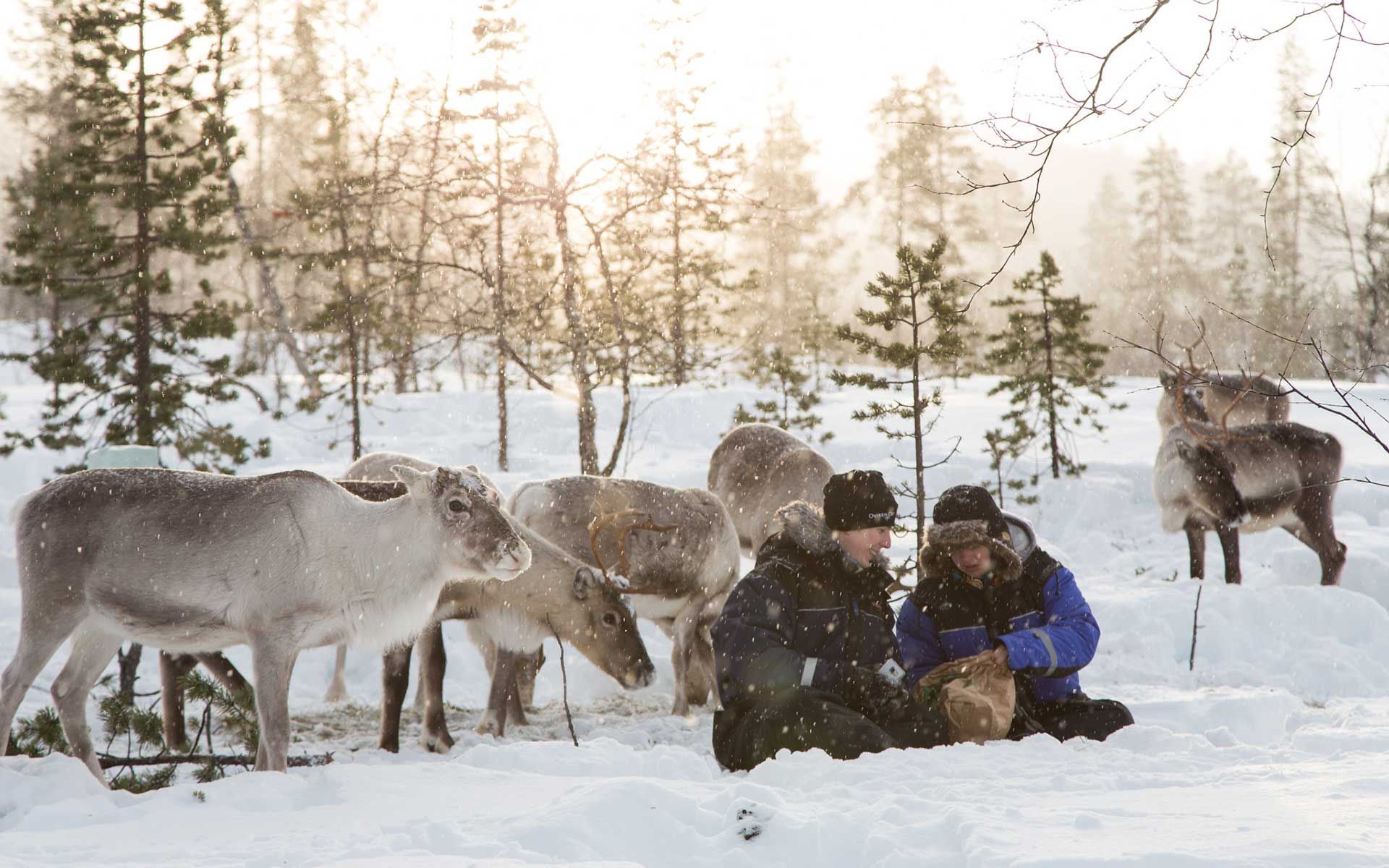
The Sámi People & Reindeer Husbandry
SÁMI PEOPLE IN FINLAND
The Sámi people are the only officially recognised indigenous peoples in the European Union. Estimated to be around 75,000 in number, there are around 9000 Sámis in Finland, over 40,000 in Norway, 15,000 – 20,000 in Sweden and 2000 in Russia. Although Sámi people are distributed across country borders, they consider themselves to belong to one land known as Sápmi or Sámiland, have one Sámi flag and their own national day which is celebrated on 6th February.
Finland’s Sámi population has its own parliament which is responsible for linguistic and cultural self-government. The parliament operates out of Sajos in Inari village and is elected every fourth year. In Lapland’s northernmost municipalities Sámi students have a right to take their education in their own language. Efforts are also made to preserve the Sámi languages with immersive cultural day care centres for young children. In Finland three Sámi languages are spoken: Northern Sámi, Inari Sámi and Skolt Sámi.
Although lean-tos, kotas and other traditional structures are still a part of the Sámi culture and environment all year round, people live in modern houses, dress in modern clothes and do not differ from Finns in their outward appearance. However, almost all Sámis have a Sámi dress, which is worn on important or special occasions. When wearing the beautifully made and decorated traditional dress, a Sámi person is representing their family and their region as well as showing respect for the occasion that they are attending.
The majority of Sámis belong to the evangelical lutheran church. Skolt sámis are mostly Orthodox.
These days over half of Sámi people live outside of the Sámi area, many of them in the Helsinki area.
REINDEER HUSBANDRY
Reindeer husbandry is commonly associated with traditional Sámi livelihoods, along with fishing, hunting and handicrafts. These days reindeer herding as a main livelihood has fallen considerably. Today Sámi people living in the north often combine their traditional livelihoods with services in travel and tourism, sometimes in addition to ordinary jobs within the community.
Although reindeer are owned by different families and herders, they still graze with other herds on a collective grazing ground, used by a reindeer grazing association, known in Finnish as a ‘paliskunta‘. There are 56 ‘paliskunta’ in Finland, with each area having a limit of 200,000 reindeer on the pastures in order to allow the ground to recover and regenerate for continued use.
Reindeer husbandry follows a yearly life cycle. Calves are born in May and June, which starts off the reindeer year. From midsummer (21 June) reindeer are gathered into their summer corrals (pens), where the new calves are marked by cutting a pattern into their ear with a knife. The earmark is unique to every reindeer herder whose herd will all bear the same pattern. Assembling the reindeer into their summer corrals is assisted by the swarms of mosquitoes, flies and other insects present at that time of year, who drive the irritated reindeer out of the forest and into the open tundra.
As autumn draws in, the reindeer are rounded up again using quad bikes, mountain bikes and when the snow arrives, snowmobiles and helicopters. Once rounded up, the reindeer are separated, with those chosen for slaughter removed. Some males are castrated and some reindeer are removed for home use. Those who are not to be slaughtered are given anti-parasite treatment and released back into the wild.